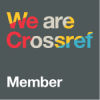Submissions
Submission Preparation Checklist
As part of the submission process, authors are required to check off their submission's compliance with all of the following items, and submissions may be returned to authors that do not adhere to these guidelines.-
All the co-authors of the manuscript, and not only the submitter or corresponding author (“Principal contact for editorial correspondence”, in the Journal system terminology), have been registered with the Journal site (http://www.tuningjournal.org/user/register) prior to or during the submission process.
-
The submitted manuscript has not been previously copyrighted or published in any form (including electronic media, databases, institutional repositories, and preprint platforms) and is not currently under consideration for publication elsewhere.
-
The submitted manuscript has been prepared using the standard template supplied for that purpose (Word format: TJHE Article Template Version Sept 2014 Open Office format: TJHE Article Template Version Sept 2014).
-
The submitted manuscript has been prepared as a single editable Microsoft Word or Open Office document with line numbering. The file includes the title page, the complete text, references, tables, figures, and author's biographical note.
-
The length of the submitted manuscript is between 5,000 and 12,000 words excluding notes and references.
-
The submitted manuscript is written in academic British or U.S. English consistently. It includes a 100-300 word abstract and 5 to10 keywords. The title page includes authors’ full names, email addresses, and institutional affiliations, plus the email address of a single corresponding author.
-
For citing and referencing, the authors have consistently used either of the two referencing systems of the Chicago Manual of Style (16th or later edition): Notes and Bibliography system and Author-Date system (https://www.chicagomanualofstyle.org/tools_citationguide.html). (This is a new rule applicable as from 1st January 2022. Until that date, authors were required to use the Notes and Bibliography system only)
-
Where available, URLs for the references have been provided.
-
The text is single-spaced; uses a 12-point font; employs italics for emphasis rather than underlining (except with URL addresses).
-
All illustrations, figures, and tables are clearly identified and placed at the end of the manuscript with clear indication in the text of where the author wants them placed.
-
Usage for Numbers:
One thousand = 1,000
One point seven = 1.7
In tables - one thousand point seven = 1000.7 (default U.S./UK keyboard MS Excel style) -
A biographical note of 150-200 words (a continuous text containing full name, email address, affiliation, current post, relevant experience, main research area(s), and highest academic qualification) has been provided for each author and is appended to the manuscript.
-
Every effort has been made to ensure the integrity of the blind peer-review.
Copyright Notice
Authors are required to sign and submit a copyright transfer agreement after acceptance but before publication of their manuscript. To that effect, they receive, from the Managing Editor of Tuning Journal for Higher Education, a standard copyright assignment form designed along the following lines:
1. Authorship:
The author who signs the copyright transfer agreement must be the sole creator of the work or legally acting on behalf of and with the full agreement of all the contributing authors.
2. Copyright and Code of conduct:
a) Authors warrant that their work is original; has not been previously copyrighted or published in any form; is not under consideration for publication elsewhere; its submission and publication do not violate TJHE Ethical Guidelines for Publication and any codes (of conduct), privacy and confidentiality agreements, laws or any rights of any third party; and no publication payment by the Publisher (University of Deusto) is required.
b) Authors are solely liable for the consequences that may arise from third parties’ complaints about the submitted manuscript and its publication in Tuning Journal for Higher Education (TJHE).
c) Authors grant to the Publisher the worldwide, sub-licensable, and royalty-free right to exploit the work in all forms and media of expression, now known or developed in the future, for educational and scholarly purposes.
d) Authors retain the right to archive, present, display, distribute, develop, and republish their work (publisher's version) to progress their scientific career provided the original publication source (Tuning Journal) is acknowledged properly and in a way that does not suggest the Publisher endorses them or their use of the wortk.
e) Authors warrant that no permissions or licences of any kind will be granted that might infringe the rights granted to the Publisher.
3. Users:
Tuning Journal for Higher Education is an Open Access publication. Its content is free for full and immediate access, reading, search, download, distribution and reuse in any medium or format only for non-commercial purposes and in compliance with any applicable copyright legislation, without prior permission from the Publisher or the author(s). In any case, proper acknowledgement of the original publication source must be made and any changes to the original work must be indicated clearly and in a manner that does not suggest the author’s and or Publisher’s endorsement whatsoever. Any other use of its content in any medium or format, now known or developed in the future, requires prior written permission of the copyright holder.
Privacy Statement
The names and email addresses uploaded to this website will be used exclusively for the stated purposes of this Journal and will not be made available for any other purpose, or to any other party.
In addition, the University of Deusto provides adequate support and maintenance to the Journal's website, paying special attention to security aspects that help protect users against viruses and malware.
For all of the above, the guidelines regarding privacy and security policies established by the University of Deusto (https://www.deusto.es/es/inicio/privacidad) will be followed.

1.jpg)
1.jpg)
.jpg)
1.jpg)
.jpg)
.jpg)









